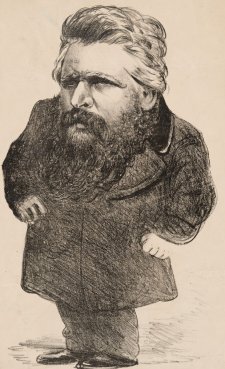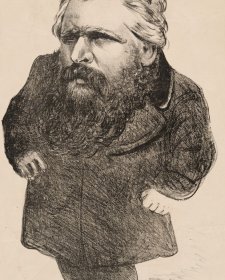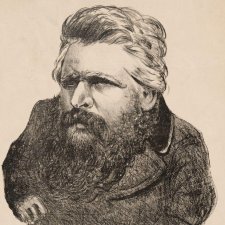- About us
- Support the Gallery
- Venue hire
- Publications
- Research library
- Organisation chart
- Employment
- Contact us
- Make a booking
- Onsite programs
- Online programs
- School visit information
- Learning resources
- Little Darlings
- Professional learning
Richard Goldsbrough (1821–1886) was a butcher’s son from Shipley, Yorkshire, who became a leading Australian woolbroker. Goldsbrough arrived in Melbourne in late 1847 having completed his butchery apprenticeship and after a period working as a woolstapler in Bradford. In Victoria, he started out classing sheep and wool and in 1850 acquired a woolbroking business which subsequently offered the colony’s first regular wool auctions. His firm also branched into stock and station sales, with Goldsborough himself purchasing several properties which he later resold at a profit. In addition, he remained a part-owner of many sheep stations in Gippsland and the Murray and Loddon River districts. Recovering from the financial blow dealt by the decline in stock and station values of the late 1860s, Goldsborough’s company merged with the Australasian Agency & Banking Corporation in 1881, and later he purchased the Sydney business Mort & Co. to form Goldsborough Mort & Co. Ltd. Outside the business sphere, Goldsbrough indulged his fascination for the turf and was a steward of the Victoria Racing Club from its outset. His legendary conviviality and zest for hospitality is amply demonstrated by the inventory taken of his cellar after his death, from cancer, in April 1886: it reportedly contained 682 litres of whiskey, 318 of brandy and 455 of sherry, among vast quantities of other liquors. His company’s woolstores are said by the author of his listing in the ADB to have ‘formed the basis of a distinctively Australian style of building’, and his business methods contributed in a very substantial degree to the consolidation of the wool industry in Australia.
Collection: National Portrait Gallery
Purchased 2016



On one level The Companion talks about the most famous and frontline Australians, but on another it tells us about ourselves.



Joanna Gilmour on Tom Durkin playing with Melbourne's manhood.



Visit us, learn with us, support us or work with us! Here’s a range of information about planning your visit, our history and more!